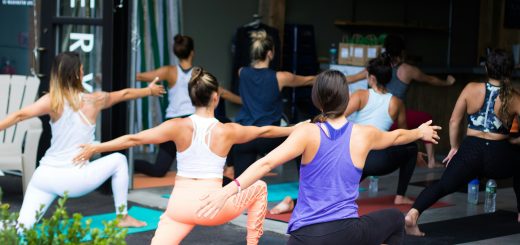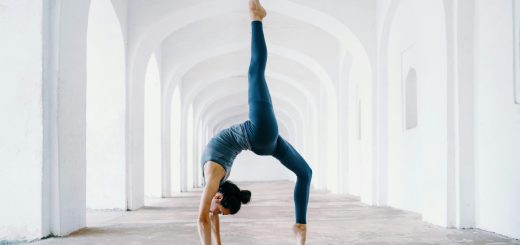Power Yoga: Strength & Flow Explained

Before diving in, please note: This post is for informational purposes only. If you’d like to know more about how we approach topics, feel free to check out our friendly Disclaimer Page.
Hey there, amazing readers! 🖐️ Just a quick note: yes, we know there are a lot of ads here. Trust us, we get it—it’s not the prettiest look, but they help us keep this blog alive and kicking. Those pesky little ads cover the costs of all the behind-the-scenes magic, from hosting and tech stuff to creating content we hope you’ll love.
We’re committed to delivering quality posts, and your support (even just sticking around despite the ads) means everything to us. So, bear with us, and thanks for helping us keep the good vibes rolling. Now, on to the fun stuff! 😉
TRANSLATE BUTTON AT THE END OF THE ARTICLE
A Quick Overview
Power Yoga is a dynamic and physically demanding form of yoga that focuses on building strength, flexibility, and mindfulness through a series of flowing sequences.
It combines elements of traditional yoga with strength training exercises to create a challenging yet energizing practice.
Power Yoga is often performed in a heated room to help increase flexibility and detoxify the body.
It is suitable for all levels of practitioners, from beginners to advanced yogis, and can be modified to suit individual needs and abilities.
What is Power Yoga?
Power Yoga is a modern form of yoga that was developed in the 1990s as a more vigorous and fitness-oriented variation of traditional yoga practices.
It is characterized by a fast-paced and intense sequence of poses that are designed to build strength, improve flexibility, and promote mental focus.
Unlike other styles of yoga that emphasize relaxation and meditation, Power Yoga focuses on physical fitness and stamina.
It typically includes a combination of flowing movements, static poses, and strength-building exercises.
Benefits of Power Yoga
There are numerous benefits to practicing Power Yoga, including:
Increased strength: Power Yoga helps to build muscular strength and endurance through challenging poses and sequences.
Improved flexibility: The dynamic movements and stretches in Power Yoga help to increase flexibility and range of motion.
Enhanced focus and concentration: The fast-paced nature of Power Yoga requires practitioners to stay present and focused, which can improve mental clarity and concentration.
Stress relief: The physical intensity of Power Yoga can help release tension and stress, promoting relaxation and a sense of well-being.
Weight loss: Power Yoga can be an effective form of exercise for burning calories and promoting weight loss.
Strength Building in Power Yoga
Power Yoga is designed to build strength throughout the entire body, with a focus on the core, arms, and legs.
Poses such as Plank, Chaturanga, and Warrior sequences help to strengthen the muscles and improve overall stability.
By holding challenging poses and moving dynamically from one pose to another, practitioners can increase their muscle tone and endurance over time.
The repetitive nature of Power Yoga sequences also helps to build muscle memory and improve coordination.
Flow in Power Yoga
Flow is a key component of Power Yoga, as sequences are designed to be performed in a continuous and fluid manner.
The flowing movements help to improve cardiovascular fitness, increase stamina, and promote a sense of fluidity and grace in the practice.
Practitioners are encouraged to move with their breath, transitioning smoothly from one pose to the next without pausing.
This continuous movement creates a sense of flow and connection between the body, breath, and mind.
Core Strength in Power Yoga
Core strength is a fundamental aspect of Power Yoga, as many poses require a strong and stable core to maintain proper alignment and support the body.
Poses such as Boat, Plank, and Side Plank target the abdominal muscles, obliques, and lower back, helping to improve core strength and stability.
By engaging the core muscles in each pose, practitioners can build a strong foundation for their practice and prevent injuries.
Core strength in Power Yoga is not only essential for physical fitness but also for promoting good posture and alignment.
Flexibility in Power Yoga
Flexibility is an important component of Power Yoga, as the practice involves a wide range of movements and stretches that target different muscle groups.
Poses such as Downward Dog, Forward Fold, and Pigeon help to stretch and lengthen the muscles, improving flexibility and mobility.
Over time, regular practice of Power Yoga can help to increase flexibility in the hamstrings, hips, shoulders, and spine.
This improved flexibility can not only enhance performance in yoga poses but also prevent injuries and promote overall joint health.
Breathing Techniques
Breath awareness and control are integral to the practice of Power Yoga.
Practitioners are encouraged to synchronize their breath with movement, inhaling and exhaling deeply as they flow through sequences.
The breath acts as a guide for the practice, helping to regulate energy levels, calm the mind, and promote relaxation.
Breathing techniques such as Ujjayi breath (victorious breath) and Kapalabhati (breath of fire) are commonly used in Power Yoga to enhance focus and create a meditative state during the practice.
Power Yoga vs Traditional Yoga
Power Yoga differs from traditional yoga styles in its emphasis on physical fitness and strength building.
While traditional yoga focuses on relaxation, meditation, and spiritual growth, Power Yoga is more fitness-oriented and dynamic.
Traditional yoga often includes longer holds in poses, relaxation at the end of the practice, and a more meditative approach to movement.
Power Yoga, on the other hand, involves faster-paced sequences, strength-building exercises, and a focus on physical endurance.
Both styles have their benefits and can complement each other in a well-rounded yoga practice.
Power Yoga for Weight Loss
Power Yoga can be an effective form of exercise for weight loss and maintaining a healthy body weight.
The intense physical activity in Power Yoga helps to burn calories, increase metabolism, and build lean muscle mass.
The flowing sequences and strength-building poses in Power Yoga create a full-body workout that targets multiple muscle groups and promotes cardiovascular fitness.
Regular practice of Power Yoga, combined with a balanced diet and healthy lifestyle choices, can support weight loss goals and improve overall physical fitness.
Power Yoga for Stress Relief
In addition to its physical benefits, Power Yoga can also be a powerful tool for stress relief and relaxation.
The dynamic movements and deep breathing techniques in Power Yoga help to release tension, calm the mind, and promote a sense of inner peace.
By focusing on the present moment and connecting with the breath, practitioners can reduce stress and anxiety, improve mental clarity, and enhance overall well-being.
The physical intensity of Power Yoga can also help to release endorphins, the body’s natural feel-good hormones, which can elevate mood and reduce stress levels.
Best Poses for Power Yoga
Some of the best poses for Power Yoga include:
Downward Dog: This pose helps to stretch the entire body, strengthen the arms and legs, and improve posture.
Warrior series: Warrior poses help to build strength in the legs, open the hips, and improve balance.
Plank: Plank pose strengthens the core, arms, and shoulders, and promotes stability throughout the body.
Chair pose: Chair pose builds strength in the legs, engages the core, and improves balance and endurance.
Cobra pose: Cobra pose stretches the chest and shoulders, strengthens the back muscles, and improves spinal flexibility.
Tips for a Successful Power Yoga Practice
To make the most of your Power Yoga practice, consider the following tips:
Stay hydrated: Drink plenty of water before and after your practice to stay hydrated and energized.
Listen to your body: Pay attention to how your body feels in each pose and modify as needed to prevent injuries.
Focus on the breath: Use your breath to guide your movements and create a sense of mindfulness in your practice.
Warm up: Start with a few gentle stretches and warm-up exercises to prepare your body for the practice.
Practice regularly: Consistent practice is key to seeing progress and reaping the benefits of Power Yoga.
Conclusion
Power Yoga is a dynamic and challenging form of yoga that offers a wide range of physical and mental benefits.
By incorporating strength-building exercises, flowing sequences, and deep breathing techniques, Power Yoga can help improve strength, flexibility, focus, and overall well-being.
Whether you are looking to build muscle, lose weight, reduce stress, or enhance your yoga practice, Power Yoga can be a valuable addition to your fitness routine.
With regular practice and dedication, you can experience the transformative power of Power Yoga in your mind, body, and spirit.

The Enlightenment Journey is a remarkable collection of writings authored by a distinguished group of experts in the fields of spirituality, new age, and esoteric knowledge.
This anthology features a diverse assembly of well-experienced authors who bring their profound insights and credible perspectives to the forefront.
Each contributor possesses a wealth of knowledge and wisdom, making them authorities in their respective domains.
Together, they offer readers a transformative journey into the realms of spiritual growth, self-discovery, and esoteric enlightenment.
The Enlightenment Journey is a testament to the collective expertise of these luminaries, providing readers with a rich tapestry of ideas and information to illuminate their spiritual path.
Our Diverse Expertise 🌟
While our primary focus is on spirituality and esotericism, we are equally passionate about exploring a wide range of other topics and niches 🌍📚. Our experienced team is dedicated to delivering high-quality, informative content across various subjects ✨.
To ensure we provide the most accurate and valuable insights, we collaborate with trusted experts in their respective domains 🧑🏫👩🏫. This allows us to offer well-rounded perspectives and knowledge to our readers.
Our blog originally focused on spirituality and metaphysics, but we’ve since expanded to cover a wide range of niches. Don’t worry—we continue to publish a lot of articles on spirituality! Frequently visit our blog to explore our diverse content and stay tuned for more insightful reads.






